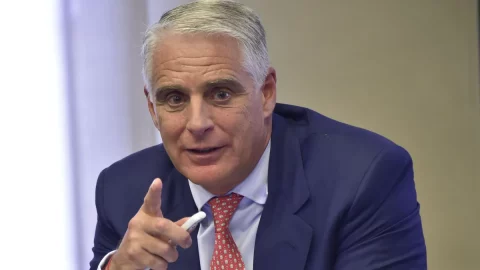The Fed maintains the 85 billion stimulus plan for the economy and leaves interest rates unchanged between 0 and 0,25%. No tapering, so for now. The S&P immediately celebrates by leaping to a new record, Dow Jones and Nasdaq are also flying and the Treasury yield falls to 2,75%, down 12 basis points.
Therefore, the sharp line of prudence wins, which led to the exclusion of the option that seemed the most awaited by some observers, ie a slight tapering, with a moderate reduction in purchases. Instead, the Fed will continue to buy $45 billion of long-term Treasuries and $40 of mortgage-backed bonds and expects exceptionally low rates to be appropriate until the unemployment rate falls to 6,5%.
The fear of cutting oxygen from the economy too soon leads Ben Bernanke to postpone still the decision to start tapering, the announcement of which a few months ago had thrown the markets into turmoil. On the other hand, the Fed has revised downwards its US growth estimates for 2013, forecasting a GDP increase of between 2,0% and 2,3%, compared with the 2,3-2,6% estimated in June. Growth estimates for 2014 have also been revised downwards: GDP will rise by 2,9%-3,1% against 3,0%-3,5% in June.
On the unemployment front, the Fed expects the unemployment rate in 2013 to be between 7,1 and 7,3%, in line with the previously estimated 7,2-7,3%, in 2014 unemployment will fall to 6,4- 6,8%, in line with the 6,5%-6,8% expected in June. Inflation will remain firmly below 2% in both 2013 and 2014.
“The information received so far suggests that economic activity is growing at a moderate rate. Some labor market indicators have improved further in recent months but the unemployment rate remains high.
If household spending and fixed investments are progressing and the real estate sector has strengthened, however, mortgage rates have increased further and fiscal policy is holding back growth: “The Commission believes that downside risks to the economy and to the labor market have diminished since last autumn - writes the Fed - but the tightening of financial conditions observed in recent months, if it continues, could slow the pace of improvements in the economy and in the labor market”.
Bernanke does not want to frustrate the efforts made so far: the Fed said it wanted more evidence of progress in growth before asset purchases slowed, stressing that tightening financial conditions could slow growth. The speed of purchases will depend on growth.
"Asset purchases – the Fed specified – are not on a track that has already been decided and the Commission's decisions on pace will remain conditional on the Commission's economic outlook as well as its decisions on the likely effectiveness and cost of the purchases themselves.
All the governors voted in favor of the Fed's decision, with the exception of Esther L. George, who says she is concerned that the high level of accommodative policy could increase the future risks of economic and financial imbalances and, over time, cause an increase in inflation expectations.
During the press conference, Bernanke did not want to comment on his successor: “I don't want to talk about my plans,” he replied to those asked for guidance on the future of the Fed's leadership. Bernanke's term expires in January 2014 and, at the moment, Janet Yellen, the current pro-policy Fed vice chair of stimuli, seems to be in pole position to assume the position.




